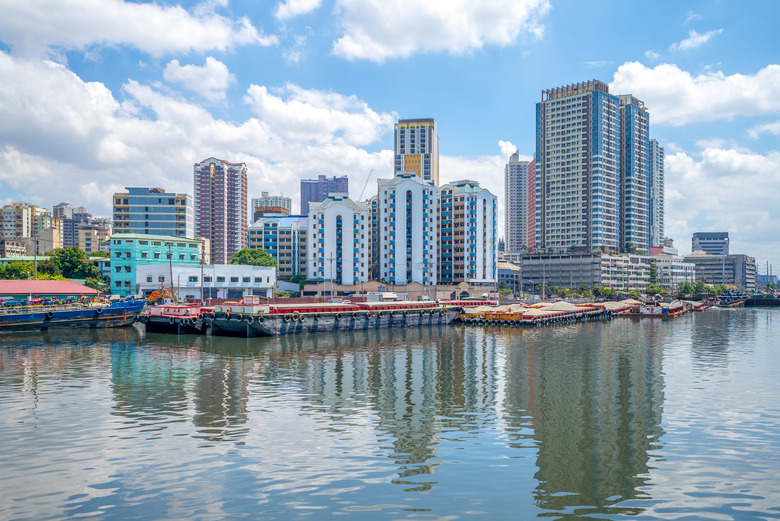What Are The Causes Of The Pasig River Pollution?
One of the main rivers of the Philippines, Pasig River was once praised for its beauty. It encompasses in its system many smaller rivers and tributaries, six subbasins and Manila Bay. It is the primary river supporting the area known as Metro Manila, which is the capital city of Manila, and its surrounding metropolis. Since the end of World War II, Pasig River has been the primary recipient of much of the pollution produced by Metro Manila's ten million inhabitants.
Urban Growth
Urban Growth
The population along Pasig River has continued to multiply, but the developing country's ability to cope with waste disposal has not kept up. Initially used for bathing and fishing, the river has become known as the "toilet bowl" of Manila. Pollution dumped into the river and its tributaries has accumulated, and is no longer capable of sustaining any life other than janitor fish and water lilies. Ecologists consider it dead. Although many laws and plans have been put into place to regulate pollution and clean the water, none have proved very effectual to date.
Household Waste
Household Waste
It is estimated that 65 percent of the pollution in Pasig River comes from household waste. In a third world country where many of the homes do not have indoor plumbing, the river is a place to dump some of the 440 tons of wastewater produced daily by Metro Manila's citizens. An additional 4,000 settlers along the river are considered to be "informal." Among its other unpleasant features, Pasig River is noted for its dark-colored water, unpleasant smell and the presence of floating feces.
Industrial Waste
Industrial Waste
Approximately 30 percent of river pollutants come from industries, which are located in close proximity to it. One Action Plan created by the River Rehabilitation Secretariat identified 315 industries that generate significant amounts of pollution. Some of these, such as the Republic Asahi glassworks factory, have their own water treatment facilities that are still incapable of removing heavy metal pollutants, such as nickel. Copper, lead, manganese and zinc have also been found in unacceptably high levels, along with pesticides, nitrates and phosphates.
Solid Waste
Solid Waste
Solid waste means garbage. Metro Manila produces 7,000 tons of garbage a day without the facilities to dispose of it adequately. Therefore, much of it — about 1,500 tons — is thrown into streams, tributaries and the bay. Some tributaries have actually become clogged from all of the trash in them. One project called "Kapit Bisig sa Ilog Pasig," intends to set up solid waste management facilities, and to encourage communities to become involved by teaching them how to generate income by making items like pails, chairs and bricks from plastic and polystyrene foam.
Cite This Article
MLA
Fitzgerald, Helen. "What Are The Causes Of The Pasig River Pollution?" sciencing.com, https://www.sciencing.com/info-8788724-causes-pasig-river-pollution/. 22 November 2019.
APA
Fitzgerald, Helen. (2019, November 22). What Are The Causes Of The Pasig River Pollution?. sciencing.com. Retrieved from https://www.sciencing.com/info-8788724-causes-pasig-river-pollution/
Chicago
Fitzgerald, Helen. What Are The Causes Of The Pasig River Pollution? last modified March 24, 2022. https://www.sciencing.com/info-8788724-causes-pasig-river-pollution/
